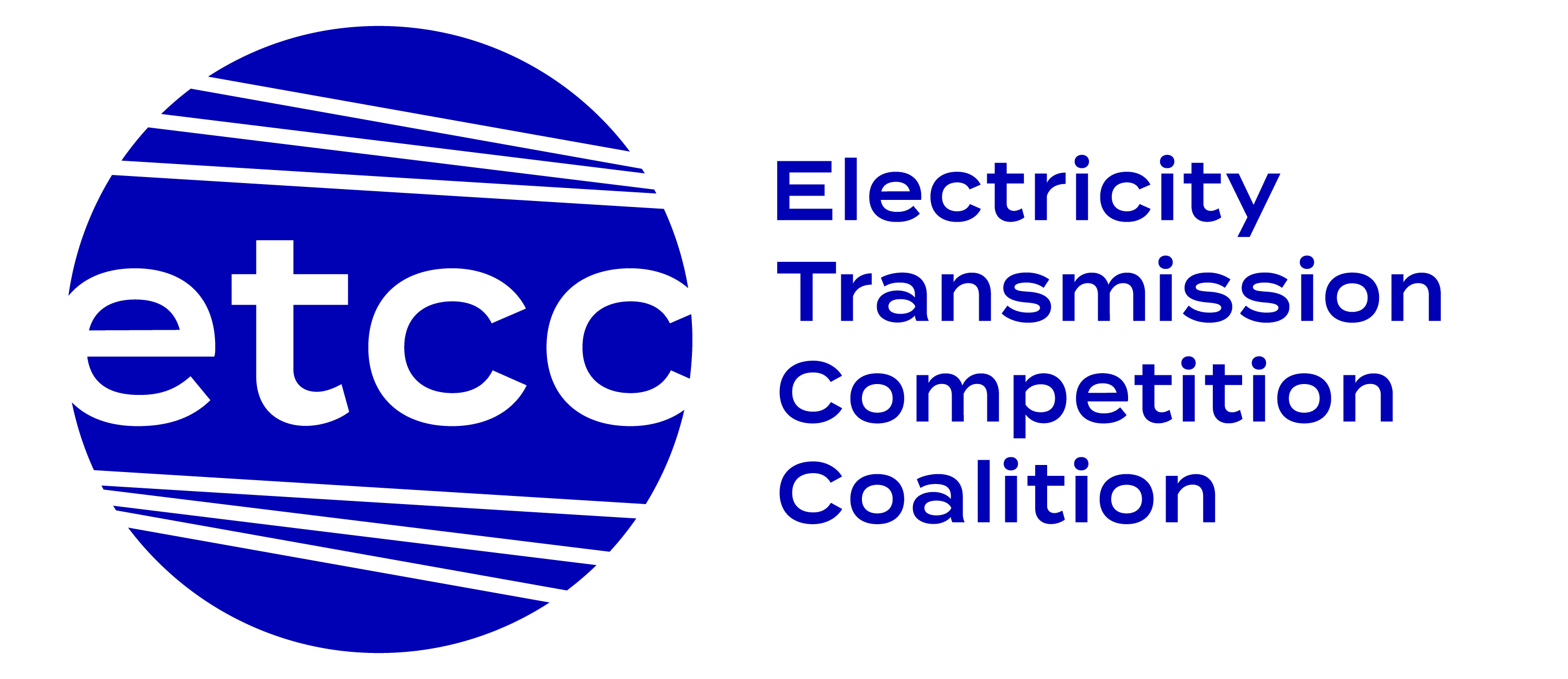April 10, 2022
Stakeholder Soapbox: Three FERC Fixes to Enable Transmission Competition
(This article was originally published in RTO Insider and can be viewed here.)
Transmission is the Backbone of Decarbonization
 Paul Segal, LS Power | LS Power
Paul Segal, LS Power | LS Power
Essential to combating climate change is a significant buildout of transmission. Achieving critical elements of a “net-zero” economy — including electrified transportation and power generation that relies heavily on wind and solar resources — will require a massive investment in our nation’s transmission infrastructure. A recent study of long-term decarbonization pathways estimates an investment of $1.3-3.6 trillion will be needed through 2050 to expand the U.S. transmission system by ~2-5X[1] to meet climate goals.
To grow our current system by this magnitude, we need a regulatory framework that cost-effectively mobilizes investment into new transmission. Regrettably, current federal and state regulations fail to harness the power of competition to accelerate investment and control costs. Instead, regulations cede too much control over our nation’s grid to the self-interest of incumbent utilities, which benefit financially from augmenting, rather than controlling, costs. As a result, historically less than 10% of domestic transmission has been subject to competitive bidding.
Correcting the flaws within our transmission policy lies within the power of federal regulators — specifically, the Federal Energy Regulatory Commission (FERC). To promote more competitive transmission procurements, FERC must close unintended loopholes to allow the already-existing FERC Order 1000 to function as intended by (1) creating a robust Independent System Planner standard; (2) ensuring that all transmission over 100 kV is regionally (rather than locally) planned; and (3) mandate minimum transmission transfer capability between regions.
Competition is Crucial to Scaling High-Impact Transmission Investment
To get to where we need to go, we must utilize the power of competition to optimize the buildout of America’s transmission system by:
- Reducing costs: Relative to an incumbent utility operating as an isolated monopoly, introducing competition into transmission procurements sharpens the focus on efficient designs and cost-containment mechanisms (i.e. fosters approaches that shift the risk of cost overruns and inflationary pressures onto developers and away from ratepayers). In New Jersey’s recent transmission solicitation to support its planned offshore wind buildout, 57 out of 79 proposals included cost-containment provisions. Such provisions range from binding construction cost caps to limits on allowable return on equity. None of these ratepayer protections would have been possible were it not for a competitive process that rewards developers for controlling costs.
Studies from The Brattle Group and other sources show that competitive bidding processes routinely deliver projects at discounts of 30% (or more) to initial project cost estimates and incumbent utility offers. Given the long-term required transmission investment of ~$1-$4 trillion, savings of $300-$900 billion are at stake (and are particularly significant given today’s inflationary climate). In transmission as in other sectors — and as the Biden Administration highlights in its recent “Executive Order on Promoting Competition in the American Economy”[2] — enhanced competition benefits consumers and strengthens economic growth.
- Encouraging innovation: Exposure to competitive pressures spurs innovative designs that can transmit more power over the same footprint. Unlike incumbent regulated utilities, competitive bidders are rewarded for doing more with less. For example, with LS Power’s Silver Run transmission project between Delaware and New Jersey (awarded in a PJM competitive solicitation), use of a customized underwater cable injector design (the first of its kind in the U.S.) yielded 60% cost savings relative to initial estimates, in addition to environmental benefits from less overhead wiring and a smaller land footprint
Regulatory Change is Essential to Promote Efficiency
Prior to 2011, incumbent utilities that owned transmission infrastructure generally proposed and built transmission projects without any competition or incentive to contain costs. To protect consumers, FERC Order 1000 was implemented in 2011 to mandate that utilities allow competition for projects that are regionally planned and cost-allocated to two or more utilities. Though successful in creating an initial market for competitive transmission procurements, unintended loopholes in FERC Order 1000’s implementation mean that procurements have remained quite limited. For example, between 2013 and 2017, only 3% of domestic transmission was subject to competition (i.e., $540 million out of total annual average transmission investment over this period of $18 billion).[3] Even with a recent uptick in competitive awards, this share currently remains below 10%.
The reason why transmission competition has been limited is that self-interested monopoly utilities have devised tactics to restrict the definition of “regionally planned” (as opposed to “locally planned”) or otherwise subvert the intent of Order 1000. Examples of such self-serving tactics include:
- Minimum voltage requirements: Many regions (including PJM, CAISO and MISO) restrict competitive projects to those above 200 kV — thereby excluding large swaths of the transmission network from competition.[4]
- Reliability exemptions: Projects are frequently exempted from competition by deeming them necessary for near-term reliability purposes, while short-term system planning is utilized to avoid competitive processes.
- State ROFR laws: Utilities have successfully lobbied state legislatures to pass laws giving them a right of first refusal (ROFR) on any transmission solicitations — thereby eliminating and harming competitive procurements. States that adopted such ROFR laws include Iowa, Minnesota, North Dakota, Michigan, South Dakota and Texas.
Such nefarious tactics have impeded transmission competition throughout the U.S. at the expense of consumers, particularly in those regions (e.g., the Southeast and Pacific Northwest) that are outside the purview of a regional transmission organization (RTO). In the decade since enactment of Order 1000, these non-RTO regions have held extremely limited competitive transmission procurements.
FERC Fixes: Independent System Planner, Lower Voltage Limits, Minimum Transfer Capability
To address these challenges and promote cost-effective and innovative transmission processes, FERC should increase its enforcement of existing rules and further promulgate new policies that bolster competitive transmission procurements.
LS Power respectfully proposes three policies that would extend transmission competition to non-RTO regions, reduce “gaming of the system” via minimum voltage thresholds for regional planning and competition, and catalyze new interregional transmission projects:
Recommendation #1: Level the playing field for enforcement. If FERC is unwilling to mandate RTOs nationally, then FERC should apply an enhanced Independent System Planner (ISP) standard and planning scope to each of the 14 Order 1000 Regions
Put simply, an ISP accountable to FERC will exercise planning authority for all regional and interregional planning on transmission facilities over 100 kV[5] (and under 100 kV, in certain instances) and will administer competitive solicitations to select transmission expansion/upgrade projects (including qualification and selection of the most efficient or cost-effective solutions).[6] Providing a nationally-consistent ISP framework will (1) ensure that all regions — including those outside of an RTO — will be subject to minimum transmission planning and independence standards and (2) further discourage utilities from leaving an existing RTO.[7]
Recommendation #2: Fix the FERC 1000 “monopoly loophole.” Require that all transmission over 100 kV be regionally planned (consistent with the new ISP standard) and that transmission above 69 kV should also be regionally planned if it is determined to facilitate regional benefits. Incumbent utilities have undermined the intent of Order 1000 by exaggerating the share of their transmission projects that deliver only local benefits (and are therefore not subject to regional cost planning and competitive procurements). Drawing a clear line in the sand that all transmission over 100 kV should be regionally planned, in line with FERC precedent,[8] would reduce the scope for such gamesmanship. A standardized planning regime will extend the architecture for competitive transmission procurements nationwide and remedy the recent deficit in regional transmission investment for non-RTO regions.
Recommendation #3: Stabilize and secure our grid. Establish minimum interregional transfer capability between Order No. 1000 regions. This will improve grid reliability during adverse weather, reduce costs by allowing low-cost generation to access load centers, and support increased integration of variable renewable resources (in line with a net-zero trajectory). The devastating effects of Winter Storm Uri in Texas underscore the risks of insufficient interconnection capacity between regions. Given there is only 1.3 GW of transmission interconnections between the three grids that cover the U.S. (the Western Interconnection, the Eastern Interconnection, and ERCOT) — versus more than 750 GW of combined load across these regions — mandatory minimum interregional transfer capability will be a well-deserved boon to the construction of new (competitively procured) transmission. While the required minimum amount of transfer capability can be debated, we propose 40% of peak load between regions as a starting point that can materially improve grid reliability and renewable energy deployment.
Decarbonizing America’s economy involves trillions of dollars of investment in new transmission. Maximizing bang-for-the-buck on such investment requires a framework that promotes competition, rather than one that defers to incumbent utilities at the expense of cost savings and innovation. More than a decade after Order 1000, it is time for FERC to tackle the ~90%+ of transmission investment that has historically been insulated from competition. Adopting a new ISP standard, requiring that all transmission over 100 kV be regionally planned (consistent with an ISP standard and scope), and mandating minimum interregional transfer capabilities are three concrete ways for FERC to revitalize transmission competition and accelerate our progress toward net zero.
Paul Segal is the CEO of LS Power.

